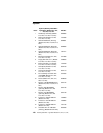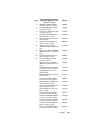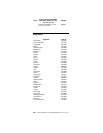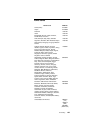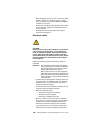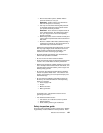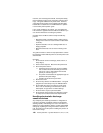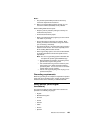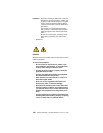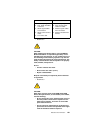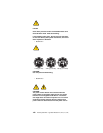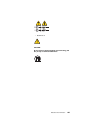158 Netfinity 3500-M20 – Type 8657 Models 21Y, 22Y, 31Y, 32Y,
machine, as it was designed and built, had required safety
items installed to protect users and service personnel from
injury. This guide addresses only those items. However,
good judgment should be used to identify potential safety
hazards due to attachment of non-IBM features or options
not covered by this inspection guide.
If any unsafe conditions are present, you must determine
how serious the apparent hazard could be and whether you
can continue without first correcting the problem.
Consider these conditions and the safety hazards they
present:
• Electrical hazards, especially primary power (primary
voltage on the frame can cause serious or fatal electri-
cal shock).
• Explosive hazards, such as a damaged CRT face or
bulging capacitor
• Mechanical hazards, such as loose or missing hard-
ware
The guide consists of a series of steps presented in a check-
list. Begin the checks with the power off, and the power cord
disconnected.
Checklist:
1. Check exterior covers for damage (loose, broken, or
sharp edges).
2. Power-off the computer. Disconnect the power cord.
3. Check the power cord for:
a. A third-wire ground connector in good condition.
Use a meter to measure third-wire ground conti-
nuity for 0.1 ohm or less between the external
ground pin and frame ground.
b. The power cord should be the appropriate type as
specified in the parts listings.
c. Insulation must not be frayed or worn.
4. Remove the cover.
5. Check for any obvious non-IBM alterations. Use good
judgment as to the safety of any non-IBM alterations.
6. Check inside the unit for any obvious unsafe condi-
tions, such as metal filings, contamination, water or
other liquids, or signs of fire or smoke damage.
7. Check for worn, frayed, or pinched cables.
8. Check that the power-supply cover fasteners (screws
or rivets) have not been removed or tampered with.
Handling electrostatic discharge-
sensitive devices
Any computer part containing transistors or integrated cir-
cuits (ICs) should be considered sensitive to electrostatic
discharge (ESD). ESD damage can occur when there is a
difference in charge between objects. Protect against ESD
damage by equalizing the charge so that the machine, the
part, the work mat, and the person handling the part are all
at the same charge.



